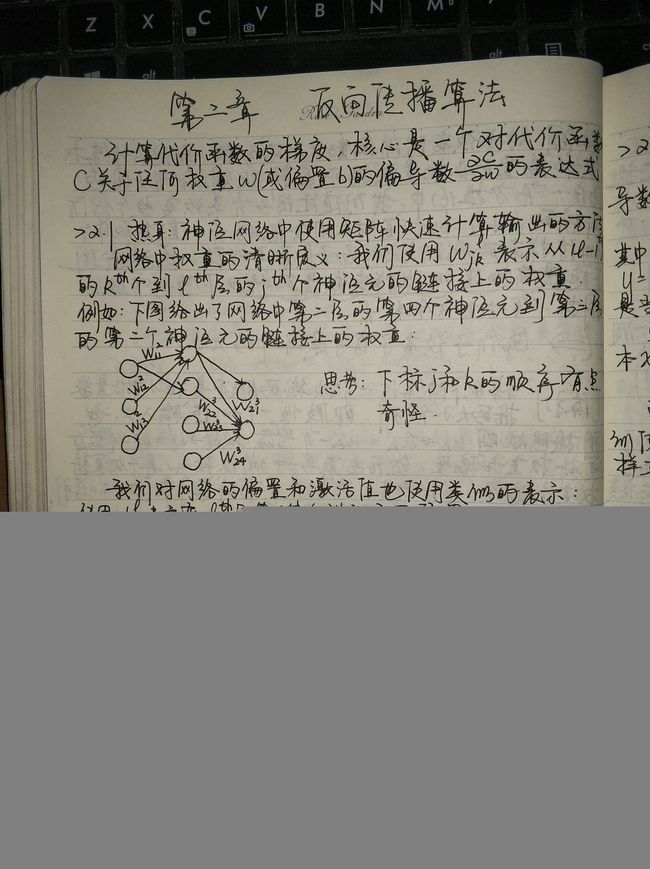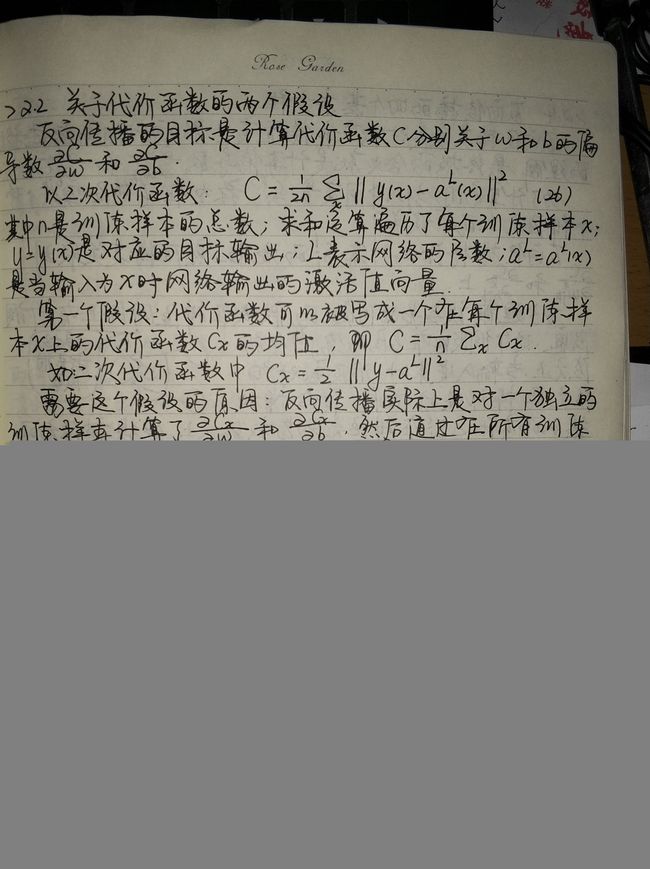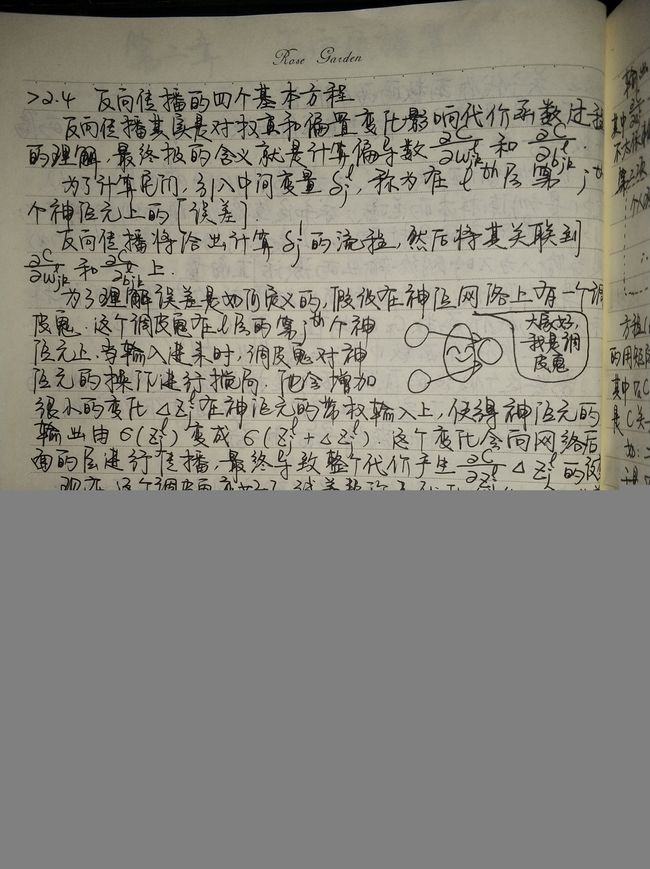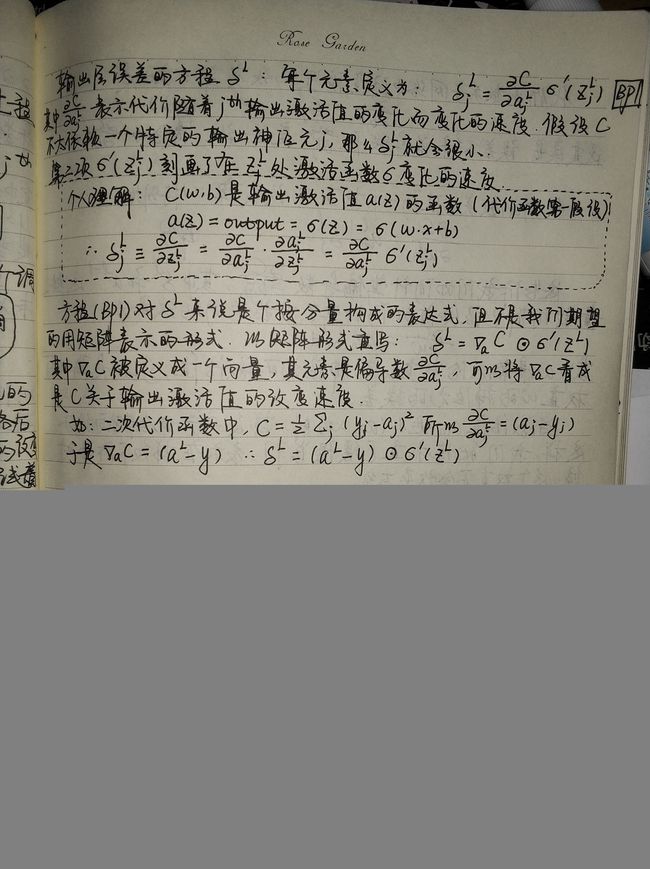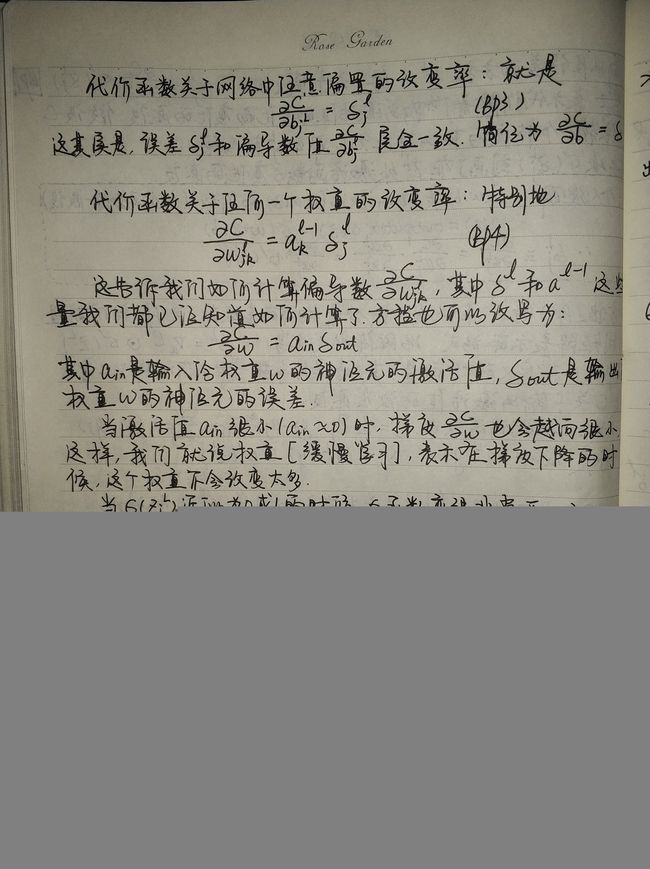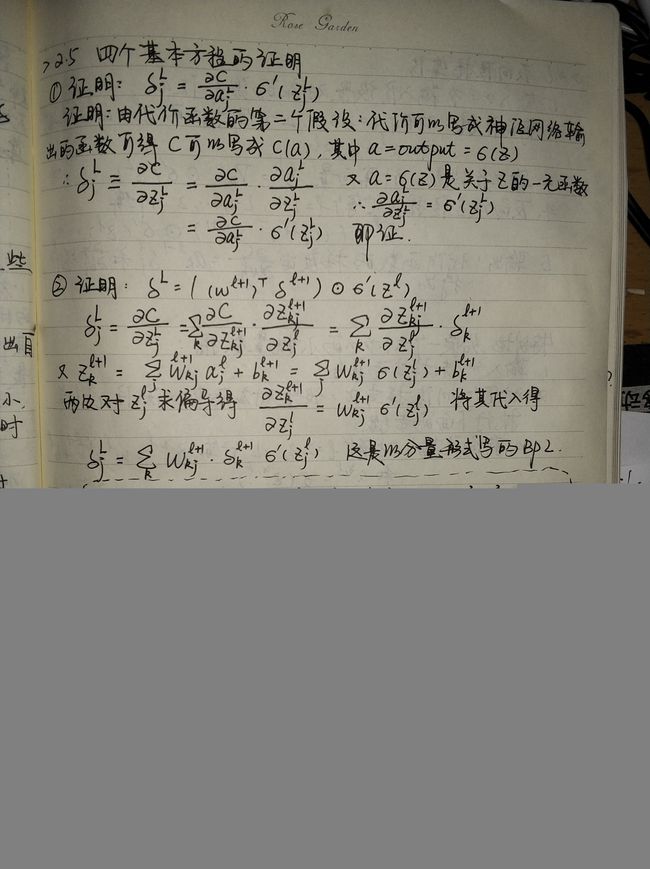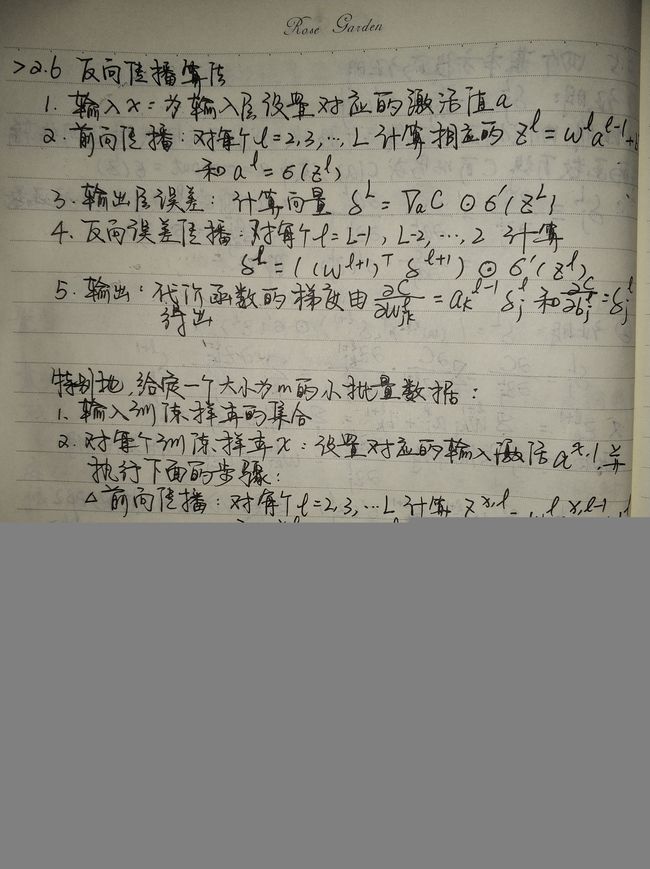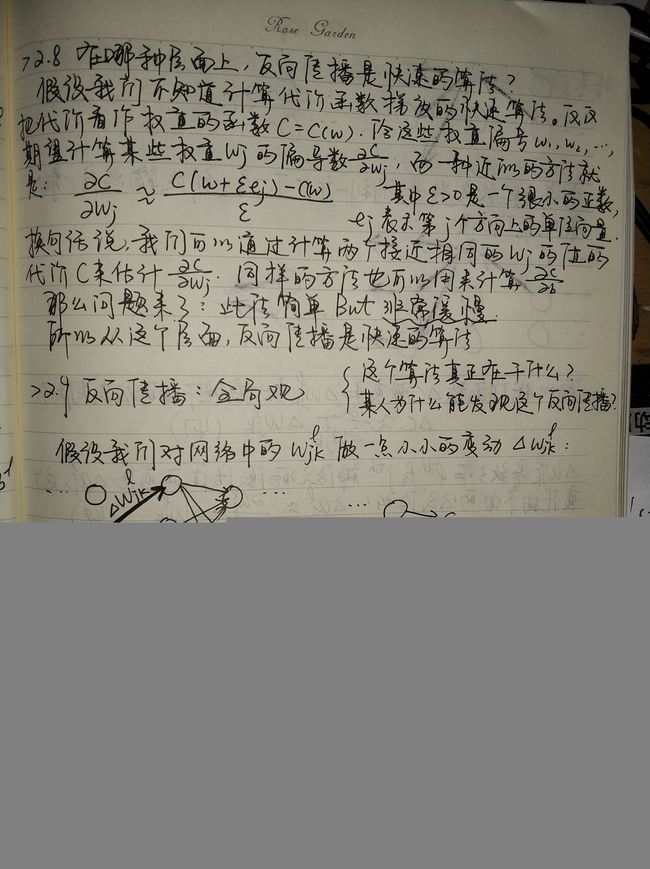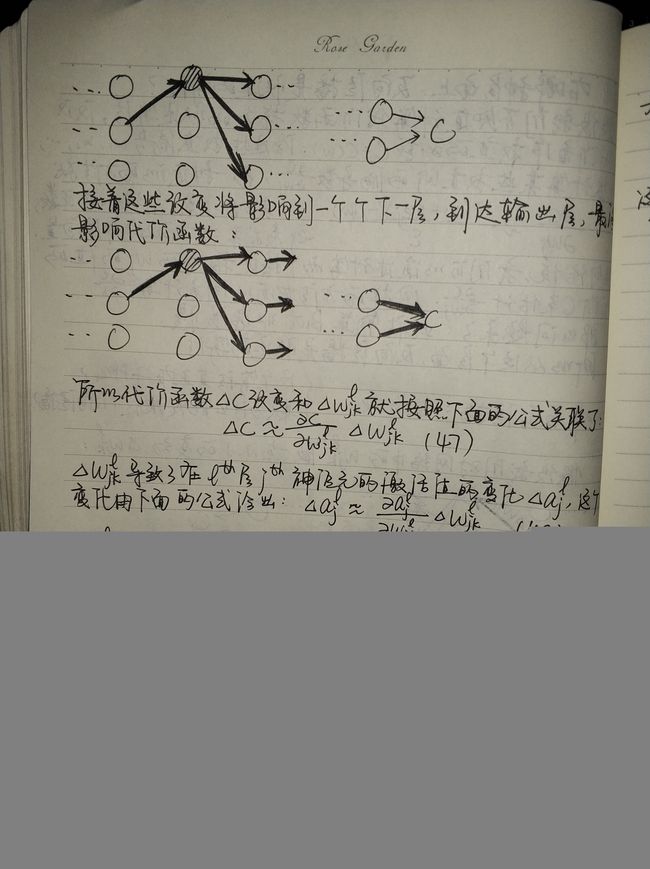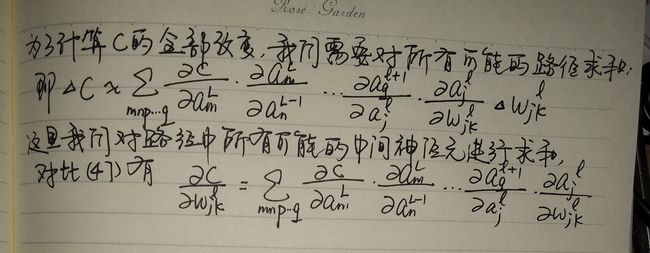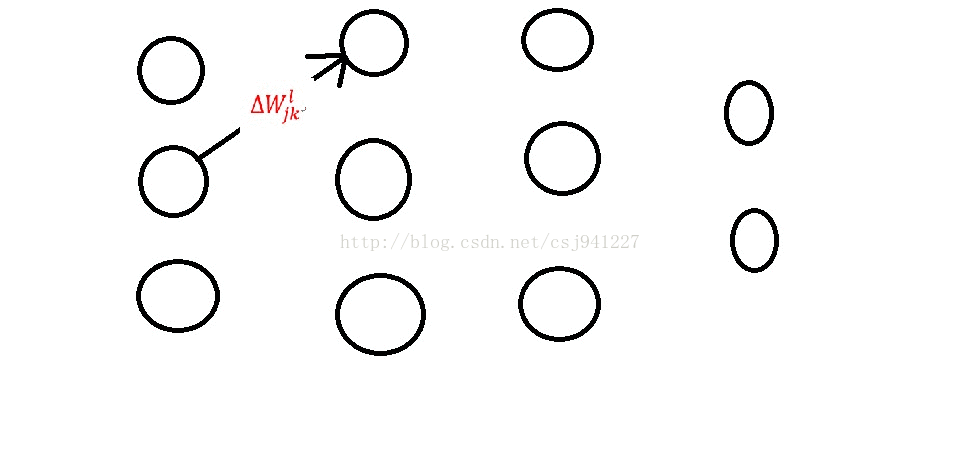- 深度学习——第2章习题2-1分析为什么平方损失函数不适用于分类问题
笨小古
深度强化学习深度学习分类人工智能
深度学习——第2章习题2-1《神经网络与深度学习》——邱锡鹏2-1分析为什么平方损失函数不适用于分类问题。平方损失函数(QuadraticLossFunction)经常用在预测标签y为实数值的任务中,定义为L(y,f(x;θ))=12(y−f(x;θ))2\mathcal{L}\left(y,f(x;\theta)\right)=\frac{1}{2}\left(y-f(x;\theta)\rig
- 吴恩达机器学习入门笔记(Week 1)
冒冒喵
吴恩达机器学习入门机器学习笔记人工智能
吴恩达机器学习Week1学习资源及工具机器学习分类专业术语(Terminology)线性回归模型(Linearregression)代价函数(costfunction)学习资源及工具1、课程资源:B站大学2、相关工具:Jupter&Github3、书籍资源:神经网络与深度学习(MichaelNielsen)、机器学习(周志华)、统计学习方法(李航)…机器学习分类1、监督学习(supervisedl
- 【神经网络与深度学习】通俗易懂的介绍非凸优化问题、梯度消失、梯度爆炸、模型的收敛、模型的发散
如果树上有叶子
神经网络与深度学习深度学习神经网络人工智能
引言深度学习近年来取得了突破性的进展,并在多个领域展现出惊人的性能。然而,神经网络的训练过程并不总是顺利的,优化过程中可能会遇到各种挑战,如非凸优化问题、梯度消失、梯度爆炸、模型收敛和模型发散。这些问题直接影响着模型的稳定性和最终性能,因此理解它们对于深度学习的研究和应用至关重要。本文将深入探讨这些优化问题的本质及其应对策略,帮助你更好地掌握深度学习模型的训练过程,并提高模型的表现。深度学习中的优
- 神经网络与深度学习知识总结(一)
2301_77111278
深度学习神经网络人工智能
1.SGD问题:病态曲率图为损失函数轮廓。在进入以蓝色标记的山沟状区域之前随机开始。颜色实际上表示损失函数在特定点处的值有多大,红色表示最大值,蓝色表示最小值。我们想要达到最小值点,为此但需要我们穿过山沟。这个区域就是所谓的病态曲率。如果把原始的SGD想象成一个纸团在重力作用向下滚动,由于质量小受到山壁弹力的干扰大,导致来回震荡;或者在鞍点处因为质量小速度很快减为0,导致无法离开这块平地。动量方法
- 神经网络与深度学习(三)——卷积神经网络基础
阿健也会编程
神经网络深度学习cnn
卷积神经网络基础1.为什么要学习神经网络1.1全连接网络问题1.2深度学习平台简介1.3PyTorch简介1.4简单示例2.卷积神经网络基础2.1进化史2.2特征提取2.3基本结构3.学习算法3.1前向传播3.2误差反向传播3.2.1经典BP算法3.2.2卷积NN的BP算法4.LeNet-5网络4.1网络介绍4.2网络结构详解4.3LeNet5代码实现1.为什么要学习神经网络1.1全连接网络问题链
- 【神经网络与深度学习】VAE 中的先验分布指的是什么
如果树上有叶子
神经网络与深度学习深度学习神经网络人工智能
VAE中的先验分布是什么?在变分自编码器(VAE)中,先验分布指的是对潜在空间中随机变量的概率分布假设。通常情况下,VAE设定潜在变量服从标准正态分布(N(0,I)),其中(0)代表均值为零的向量,(I)为单位协方差矩阵。选择标准正态分布作为先验分布的原因主要有以下几点:数学上的便利性:标准正态分布具有良好的数学性质,计算和推导更加简洁,便于模型的优化和训练。结构化的潜在空间:这种假设能够促使模型
- 【神经网络与深度学习】普通自编码器和变分自编码器的区别
如果树上有叶子
神经网络与深度学习深度学习神经网络人工智能自编码器变分自编码器
引言自编码器(Autoencoder,AE)和变分自编码器(VariationalAutoencoder,VAE)是深度学习中广泛应用的两类神经网络结构,主要用于数据的压缩、重构和生成。然而,二者在模型设计、训练目标和生成能力等方面存在显著区别。普通自编码器侧重于高效压缩数据并进行无损重构,而变分自编码器则通过潜在空间的概率分布,增强了模型的生成能力和泛化性能。本文将从多个角度探讨AE和VAE的不
- 【神经网络与深度学习】深度学习中的生成模型简介
如果树上有叶子
神经网络与深度学习深度学习神经网络人工智能生成模型
深度学习中的生成模型openai的一个古早介绍引言深度学习中的生成模型能够学习数据分布并生成新数据,在人工智能的多个领域中都有重要应用。不同类型的生成模型在原理和结构上各有特点,适用于不同的任务,如图像生成、文本生成和时间序列预测等。本文将介绍几种常见的生成模型,并分析其核心特点和应用场景。深度学习中的生成模型能够学习数据分布并生成新数据,在人工智能的多个领域中都有重要应用。主要生成模型类别包括:
- 【神经网络与深度学习】改变随机种子可以提升模型性能?
如果树上有叶子
神经网络与深度学习深度学习神经网络人工智能
引言随机种子在机器学习和数据处理领域中至关重要,它决定了模型训练、数据划分以及参数初始化的随机性。虽然固定随机种子能确保实验的可重复性,但改变随机种子有时会意外提升模型性能。本文将探讨这一现象的潜在原因,并揭示随机性如何影响优化路径、数据分布及模型泛化能力,从而为实践中的实验设计提供有价值的参考。随机种子的概念随机种子(RandomSeed)是一个用于初始化伪随机数生成器的值。在计算机程序中,随机
- 【神经网络与深度学习】端到端方法和多任务学习
如果树上有叶子
神经网络与深度学习深度学习神经网络人工智能
引言端到端方法和多任务学习是机器学习和深度学习领域中的两种重要技术,它们各自适用于不同的应用场景,并在模型设计、数据要求和训练过程等方面有着显著区别。端到端方法通过直接将输入数据映射到输出结果,从而简化了处理流程;而多任务学习则通过共享特征提升模型的性能及其对新任务的泛化能力。本文将对两种方法的定义、结构及应用场景进行简要分析,以帮助读者更好地理解和选择适合的技术。对比端到端方法和多任务学习是机器
- 【神经网络与深度学习】探索全连接网络如何学习数据的复杂模式,提取高层次特征
如果树上有叶子
神经网络与深度学习深度学习神经网络学习
引言全连接网络(FullyConnectedNetwork,FCN)是深度学习中的重要架构,广泛用于模式识别、分类和回归任务。其强大的特征提取能力使其能够自动学习输入数据中的复杂模式,并逐步形成高层次特征。这种能力主要依赖于参数学习、非线性激活函数、层次结构和特征组合等关键因素。本文将详细介绍全连接网络如何提取高层次特征,并探讨其优化策略,以提升模型的泛化能力和学习效果。1.参数学习全连接网络的每
- 【神经网络与深度学习】五折交叉验证(5-Fold Cross-Validation)
如果树上有叶子
神经网络与深度学习深度学习神经网络人工智能
引言五折交叉验证(5-FoldCross-Validation)是一种广泛应用于机器学习模型性能评估的技术,通过多次实验确保模型的评估结果更加稳定、可靠,同时最大限度地利用有限的数据资源。它将数据分成若干子集,交替作为训练集和测试集,从而减少因数据划分偶然性带来的偏差,并为模型的选择和优化提供科学依据。本文将详细探讨五折交叉验证的具体流程、目的及其实际应用场景,为理解和实施这一方法提供全面的参考。
- 【神经网络与深度学习】两种加载 pickle 文件方式(joblib、pickle)的差异
如果树上有叶子
神经网络与深度学习深度学习神经网络人工智能
引言从深度学习应用到数据分析的多元化需求出发,Python提供了丰富的工具和模块,其中pickle和joblib两种方式在加载数据文件方面表现尤为突出。不同场景对性能、兼容性以及后续处理的要求不尽相同,使得这两种方式各显优势。本文将通过深入分析和对比,从技术细节出发,揭示两种加载方式的异同,同时解读文件扩展名的选择背后的逻辑。希望为开发者在实际应用中提供切实可行的参考依据。下面为你详细分析这两种加
- 【神经网络与深度学习】训练集与验证集的功能解析与差异探究
如果树上有叶子
神经网络与深度学习深度学习神经网络人工智能
引言在深度学习模型的训练过程中,训练集和验证集是两个关键组成部分,它们在模型性能的提升和评估中扮演着不可替代的角色。通过分析这两者的区别和作用,可以帮助我们深入理解模型的学习过程和泛化能力,同时为防止过拟合及优化超参数提供重要参考。以下内容将详细剖析训练集和验证集损失值的计算过程、数据来源以及它们在训练和评估中的具体用途。通过这些分析,我们可以更全面地认识验证集的重要性及其在模型开发中的实际应用。
- 神经网络与深度学习学习笔记 第六章 循环神经网络
虢子仪
深度学习与神经网络神经网络深度学习学习
CSDN和我兰的小伙伴好呀,开学不久,事务繁忙,将近两个月没有更新了,本期为大家更新邱锡鹏老师《神经网络与深度学习》这本书循环神经网络这一章的学习笔记,本人能力有限,希望抛转引玉,为学习这一本书的小伙伴们提供一些思路与启发由于邱老师比较注重版权,因此在此声明,所有内容全部为学习邱老师课程及讲义的学习心得,不得用于任何类型的盈利活动,所有知识版权全部归邱锡鹏老师所有,在此仅做二次加工,以进行学术交流
- 《神经网络与深度学习》邱希鹏 学习笔记(4)
第89号
神经网络与深度学习学习笔记神经网络机器学习
《神经网络与深度学习》邱希鹏学习笔记(4)完成进度第二章机器学习概述机器学习算法的类型数据的特征表示传统的特征学习特征选择特征抽取深度学习方法评价指标理论和定理PAC学习理论没有免费午餐定理奥卡姆剃刀原理丑小鸭定理归纳偏置自我理解代码实现不同基函数实现最小二乘法实现梯度下降法完成进度…第二章(2)第二章(3)第三章…第二章机器学习概述第二章首先介绍机器学习的基本概念和基本要素,并较为详细地描述一个
- 【机器学习】——神经网络与深度学习_机器学习 深度学习 神经网络(1)
2401_84183451
2024年程序员学习机器学习深度学习神经网络
引入一、神经网络及其主要算法1、前馈神经网络2、感知器3、三层前馈网络(多层感知器MLP)4、反向传播算法二、深度学习1、自编码算法AutorEncoder
- 吴恩达深度学习复盘(1)神经网络与深度学习的发展
wgc2k
#深度学习深度学习人工智能
一、神经网络的起源与生物学动机灵感来源神经网络的最初动机源于对生物大脑的模仿。20世纪50年代,科学家试图通过软件模拟神经元的工作机制(如树突接收信号、轴突传递信号),构建类似人类大脑的信息处理系统。生物神经元的简化模型人工神经网络采用数学模型简化生物神经元的行为:每个神经元接收输入(数字信号),通过加权求和与激活函数处理后输出。尽管这一模型远不及真实大脑复杂,但早期研究认为其可能复现智能行为。二
- 从LLM出发:由浅入深探索AI开发的全流程与简单实践(全文3w字)
码事漫谈
AI人工智能
文章目录第一部分:AI开发的背景与历史1.1人工智能的起源与发展1.2神经网络与深度学习的崛起1.3Transformer架构与LLM的兴起1.4当前AI开发的现状与趋势第二部分:AI开发的核心技术2.1机器学习:AI的基础2.1.1机器学习的类型2.1.2机器学习的流程2.2深度学习:机器学习的进阶2.2.1神经网络基础2.2.2深度学习的关键架构2.3Transformer架构:现代LLM的核
- java实现卷积神经网络CNN(附带源码)
Katie。
Java实战项目java
Java实现卷积神经网络(CNN)项目详解目录项目概述1.1项目背景与意义1.2什么是卷积神经网络(CNN)1.3卷积神经网络的应用场景相关知识与理论基础2.1神经网络与深度学习概述2.2卷积操作与卷积层原理2.3激活函数与池化层2.4全连接层与损失函数2.5前向传播、反向传播与梯度下降项目需求与分析3.1项目目标3.2功能需求分析3.3性能与扩展性要求3.4异常处理与鲁棒性考虑系统设计与实现思路
- 机器学习与深度学习资料
JasonDing1354
【MachineLearning】
《BriefHistoryofMachineLearning》介绍:这是一篇介绍机器学习历史的文章,介绍很全面,从感知机、神经网络、决策树、SVM、Adaboost到随机森林、DeepLearning.《DeepLearninginNeuralNetworks:AnOverview》介绍:这是瑞士人工智能实验室JurgenSchmidhuber写的最新版本《神经网络与深度学习综述》本综述的特点是以
- 神经网络与深度学习入门:理解ANN、CNN和RNN
shandianfk_com
ChatGPTAI神经网络深度学习cnn
在现代科技日新月异的今天,人工智能已经成为了我们生活中的重要组成部分。无论是智能手机的语音助手,还是推荐系统,背后都有一项核心技术在支撑,那就是神经网络与深度学习。今天,我们就来聊一聊这个听起来高大上的话题,其实它也没那么难懂!什么是神经网络?首先,我们要了解什么是神经网络。神经网络(ArtificialNeuralNetwork,简称ANN)是模拟人脑神经元连接方式的一种算法。它由一层层的“神经
- 《神经网络与深度学习》(邱锡鹏) 内容概要【不含数学推导】
code_stream
#机器学习神经网络
第1章绪论基本概念:介绍了人工智能的发展历程及不同阶段的特点,如符号主义、连接主义、行为主义等。还阐述了深度学习在人工智能领域的重要地位和发展现状,以及其在图像、语音、自然语言处理等多个领域的成功应用。术语解释人工智能:旨在让机器模拟人类智能的技术和科学。深度学习:一种基于对数据进行表征学习的方法,通过构建具有很多层的神经网络模型,自动从大量数据中学习复杂的模式和特征。第2章机器学习概述基本概念:
- # 第一章:认识chatgpt
出门喝奶茶
chatgptchatgpt
chatgpt发展背景详细介绍一、基础理论背景人工智能和自然语言处理的兴起早期理论:20世纪中期,人工智能(AI)初见端倪,目标是模拟人类智能。自然语言处理作为AI的重要分支,致力于让机器理解和生成人类语言。关键里程碑:1980年代的统计方法和2000年代的神经网络技术,使NLP实现了从规则驱动到数据驱动的转变。神经网络与深度学习2010年代,深度学习的兴起极大推动了NLP的发展。基于大规模语料库
- 【ShuQiHere】《机器学习的进化史『下』:从神经网络到深度学习的飞跃》
ShuQiHere
机器学习深度学习神经网络
【ShuQiHere】引言:神经网络与深度学习的兴起在上篇文章中,我们回顾了机器学习的起源与传统模型的发展历程,如线性回归、逻辑回归和支持向量机(SVM)。然而,随着数据规模的急剧增长和计算能力的提升,传统模型在处理复杂问题时显得力不从心。在这种背景下,神经网络重新进入了研究者们的视野,并逐步演变为深度学习,成为解决复杂问题的强大工具。今天,我们将进一步探索从神经网络到深度学习的进化历程,揭示这些
- 神经网络深度学习梯度下降算法优化
海棠如醉
人工智能深度学习
【神经网络与深度学习】以最通俗易懂的角度解读[梯度下降法及其优化算法],这一篇就足够(很全很详细)_梯度下降在神经网络中的作用及概念-CSDN博客https://blog.51cto.com/u_15162069/2761936梯度下降数学原理
- 李宏毅机器学习笔记 2.回归
Simone Zeng
机器学习机器学习
最近在跟着Datawhale组队学习打卡,学习李宏毅的机器学习/深度学习的课程。课程视频:https://www.bilibili.com/video/BV1Ht411g7Ef开源内容:https://github.com/datawhalechina/leeml-notes本篇文章对应视频中的P3。另外,最近我也在学习邱锡鹏教授的《神经网络与深度学习》,会补充书上的一点内容。通过上一次课1.机器
- 深度学习路线,包括书籍和视频
jjm2002
深度学习深度学习人工智能
深度学习是一个广泛而快速发展的领域,涉及多种技术和应用。以下是一个深度学习学习路线,包括书籍和视频资源。入门阶段:理解基础知识:书籍:《深度学习》(DeepLearning)IanGoodfellow,YoshuaBengio和AaronCourville著。这是深度学习领域的权威书籍,适合初学者。书籍:《神经网络与深度学习》(NeuralNetworksandDeepLearning)Micha
- 神经网络与深度学习 Neural Networks and Deep Learning 课程笔记 第一周
林间得鹿
吴恩达深度学习系列课程笔记深度学习神经网络笔记
神经网络与深度学习NeuralNetworksandDeepLearning课程笔记第一周文章目录神经网络与深度学习NeuralNetworksandDeepLearning课程笔记第一周深度学习简介什么是神经网络使用神经网络进行监督学习为什么神经网络会兴起本文是吴恩达深度学习系列课程的学习笔记。深度学习简介什么是神经网络深度学习一般是指训练神经网络。那么什么是神经网络?课程以房价预测的例子来说明
- 小白初探|神经网络与深度学习
神奇的代码在哪里
人工智能深度学习神经网络人工智能外接显卡
一、学习背景由于工作的原因,需要开展人工智能相关的研究,虽然不用参与实际研发,但在项目实施过程中发现,人工智能的项目和普通程序开发项目不一样,门槛比较高,没有相关基础没法搞清楚人力、财力如何投入,很难合理管控成本以及时间。为搞清楚情况,老年博主决定一步一个脚印,好好自学。在写本文时,博主已学到一定阶段了,趁有时间,通过博文记录下来,以免遗忘。二、学习准备常年的学习告诉我们,一门学科要快速入门,主流
- 解线性方程组
qiuwanchi
package gaodai.matrix;
import java.util.ArrayList;
import java.util.List;
import java.util.Scanner;
public class Test {
public static void main(String[] args) {
Scanner scanner = new Sc
- 在mysql内部存储代码
annan211
性能mysql存储过程触发器
在mysql内部存储代码
在mysql内部存储代码,既有优点也有缺点,而且有人倡导有人反对。
先看优点:
1 她在服务器内部执行,离数据最近,另外在服务器上执行还可以节省带宽和网络延迟。
2 这是一种代码重用。可以方便的统一业务规则,保证某些行为的一致性,所以也可以提供一定的安全性。
3 可以简化代码的维护和版本更新。
4 可以帮助提升安全,比如提供更细
- Android使用Asynchronous Http Client完成登录保存cookie的问题
hotsunshine
android
Asynchronous Http Client是android中非常好的异步请求工具
除了异步之外还有很多封装比如json的处理,cookie的处理
引用
Persistent Cookie Storage with PersistentCookieStore
This library also includes a PersistentCookieStore whi
- java面试题
Array_06
java面试
java面试题
第一,谈谈final, finally, finalize的区别。
final-修饰符(关键字)如果一个类被声明为final,意味着它不能再派生出新的子类,不能作为父类被继承。因此一个类不能既被声明为 abstract的,又被声明为final的。将变量或方法声明为final,可以保证它们在使用中不被改变。被声明为final的变量必须在声明时给定初值,而在以后的引用中只能
- 网站加速
oloz
网站加速
前序:本人菜鸟,此文研究总结来源于互联网上的资料,大牛请勿喷!本人虚心学习,多指教.
1、减小网页体积的大小,尽量采用div+css模式,尽量避免复杂的页面结构,能简约就简约。
2、采用Gzip对网页进行压缩;
GZIP最早由Jean-loup Gailly和Mark Adler创建,用于UNⅨ系统的文件压缩。我们在Linux中经常会用到后缀为.gz
- 正确书写单例模式
随意而生
java 设计模式 单例
单例模式算是设计模式中最容易理解,也是最容易手写代码的模式了吧。但是其中的坑却不少,所以也常作为面试题来考。本文主要对几种单例写法的整理,并分析其优缺点。很多都是一些老生常谈的问题,但如果你不知道如何创建一个线程安全的单例,不知道什么是双检锁,那这篇文章可能会帮助到你。
懒汉式,线程不安全
当被问到要实现一个单例模式时,很多人的第一反应是写出如下的代码,包括教科书上也是这样
- 单例模式
香水浓
java
懒汉 调用getInstance方法时实例化
public class Singleton {
private static Singleton instance;
private Singleton() {}
public static synchronized Singleton getInstance() {
if(null == ins
- 安装Apache问题:系统找不到指定的文件 No installed service named "Apache2"
AdyZhang
apachehttp server
安装Apache问题:系统找不到指定的文件 No installed service named "Apache2"
每次到这一步都很小心防它的端口冲突问题,结果,特意留出来的80端口就是不能用,烦。
解决方法确保几处:
1、停止IIS启动
2、把端口80改成其它 (譬如90,800,,,什么数字都好)
3、防火墙(关掉试试)
在运行处输入 cmd 回车,转到apa
- 如何在android 文件选择器中选择多个图片或者视频?
aijuans
android
我的android app有这样的需求,在进行照片和视频上传的时候,需要一次性的从照片/视频库选择多条进行上传
但是android原生态的sdk中,只能一个一个的进行选择和上传。
我想知道是否有其他的android上传库可以解决这个问题,提供一个多选的功能,可以使checkbox之类的,一次选择多个 处理方法
官方的图片选择器(但是不支持所有版本的androi,只支持API Level
- mysql中查询生日提醒的日期相关的sql
baalwolf
mysql
SELECT sysid,user_name,birthday,listid,userhead_50,CONCAT(YEAR(CURDATE()),DATE_FORMAT(birthday,'-%m-%d')),CURDATE(), dayofyear( CONCAT(YEAR(CURDATE()),DATE_FORMAT(birthday,'-%m-%d')))-dayofyear(
- MongoDB索引文件破坏后导致查询错误的问题
BigBird2012
mongodb
问题描述:
MongoDB在非正常情况下关闭时,可能会导致索引文件破坏,造成数据在更新时没有反映到索引上。
解决方案:
使用脚本,重建MongoDB所有表的索引。
var names = db.getCollectionNames();
for( var i in names ){
var name = names[i];
print(name);
- Javascript Promise
bijian1013
JavaScriptPromise
Parse JavaScript SDK现在提供了支持大多数异步方法的兼容jquery的Promises模式,那么这意味着什么呢,读完下文你就了解了。
一.认识Promises
“Promises”代表着在javascript程序里下一个伟大的范式,但是理解他们为什么如此伟大不是件简
- [Zookeeper学习笔记九]Zookeeper源代码分析之Zookeeper构造过程
bit1129
zookeeper
Zookeeper重载了几个构造函数,其中构造者可以提供参数最多,可定制性最多的构造函数是
public ZooKeeper(String connectString, int sessionTimeout, Watcher watcher, long sessionId, byte[] sessionPasswd, boolea
- 【Java命令三】jstack
bit1129
jstack
jstack是用于获得当前运行的Java程序所有的线程的运行情况(thread dump),不同于jmap用于获得memory dump
[hadoop@hadoop sbin]$ jstack
Usage:
jstack [-l] <pid>
(to connect to running process)
jstack -F
- jboss 5.1启停脚本 动静分离部署
ronin47
以前启动jboss,往各种xml配置文件,现只要运行一句脚本即可。start nohup sh /**/run.sh -c servicename -b ip -g clustername -u broatcast jboss.messaging.ServerPeerID=int -Djboss.service.binding.set=p
- UI之如何打磨设计能力?
brotherlamp
UIui教程ui自学ui资料ui视频
在越来越拥挤的初创企业世界里,视觉设计的重要性往往可以与杀手级用户体验比肩。在许多情况下,尤其对于 Web 初创企业而言,这两者都是不可或缺的。前不久我们在《右脑革命:别学编程了,学艺术吧》中也曾发出过重视设计的呼吁。如何才能提高初创企业的设计能力呢?以下是 9 位创始人的体会。
1.找到自己的方式
如果你是设计师,要想提高技能可以去设计博客和展示好设计的网站如D-lists或
- 三色旗算法
bylijinnan
java算法
import java.util.Arrays;
/**
问题:
假设有一条绳子,上面有红、白、蓝三种颜色的旗子,起初绳子上的旗子颜色并没有顺序,
您希望将之分类,并排列为蓝、白、红的顺序,要如何移动次数才会最少,注意您只能在绳
子上进行这个动作,而且一次只能调换两个旗子。
网上的解法大多类似:
在一条绳子上移动,在程式中也就意味只能使用一个阵列,而不使用其它的阵列来
- 警告:No configuration found for the specified action: \'s
chiangfai
configuration
1.index.jsp页面form标签未指定namespace属性。
<!--index.jsp代码-->
<%@taglib prefix="s" uri="/struts-tags"%>
...
<s:form action="submit" method="post"&g
- redis -- hash_max_zipmap_entries设置过大有问题
chenchao051
redishash
使用redis时为了使用hash追求更高的内存使用率,我们一般都用hash结构,并且有时候会把hash_max_zipmap_entries这个值设置的很大,很多资料也推荐设置到1000,默认设置为了512,但是这里有个坑
#define ZIPMAP_BIGLEN 254
#define ZIPMAP_END 255
/* Return th
- select into outfile access deny问题
daizj
mysqltxt导出数据到文件
本文转自:http://hatemysql.com/2010/06/29/select-into-outfile-access-deny%E9%97%AE%E9%A2%98/
为应用建立了rnd的帐号,专门为他们查询线上数据库用的,当然,只有他们上了生产网络以后才能连上数据库,安全方面我们还是很注意的,呵呵。
授权的语句如下:
grant select on armory.* to rn
- phpexcel导出excel表简单入门示例
dcj3sjt126com
PHPExcelphpexcel
<?php
error_reporting(E_ALL);
ini_set('display_errors', TRUE);
ini_set('display_startup_errors', TRUE);
if (PHP_SAPI == 'cli')
die('This example should only be run from a Web Brows
- 美国电影超短200句
dcj3sjt126com
电影
1. I see. 我明白了。2. I quit! 我不干了!3. Let go! 放手!4. Me too. 我也是。5. My god! 天哪!6. No way! 不行!7. Come on. 来吧(赶快)8. Hold on. 等一等。9. I agree。 我同意。10. Not bad. 还不错。11. Not yet. 还没。12. See you. 再见。13. Shut up!
- Java访问远程服务
dyy_gusi
httpclientwebservicegetpost
随着webService的崛起,我们开始中会越来越多的使用到访问远程webService服务。当然对于不同的webService框架一般都有自己的client包供使用,但是如果使用webService框架自己的client包,那么必然需要在自己的代码中引入它的包,如果同时调运了多个不同框架的webService,那么就需要同时引入多个不同的clien
- Maven的settings.xml配置
geeksun
settings.xml
settings.xml是Maven的配置文件,下面解释一下其中的配置含义:
settings.xml存在于两个地方:
1.安装的地方:$M2_HOME/conf/settings.xml
2.用户的目录:${user.home}/.m2/settings.xml
前者又被叫做全局配置,后者被称为用户配置。如果两者都存在,它们的内容将被合并,并且用户范围的settings.xml优先。
- ubuntu的init与系统服务设置
hongtoushizi
ubuntu
转载自:
http://iysm.net/?p=178 init
Init是位于/sbin/init的一个程序,它是在linux下,在系统启动过程中,初始化所有的设备驱动程序和数据结构等之后,由内核启动的一个用户级程序,并由此init程序进而完成系统的启动过程。
ubuntu与传统的linux略有不同,使用upstart完成系统的启动,但表面上仍维持init程序的形式。
运行
- 跟我学Nginx+Lua开发目录贴
jinnianshilongnian
nginxlua
使用Nginx+Lua开发近一年的时间,学习和实践了一些Nginx+Lua开发的架构,为了让更多人使用Nginx+Lua架构开发,利用春节期间总结了一份基本的学习教程,希望对大家有用。也欢迎谈探讨学习一些经验。
目录
第一章 安装Nginx+Lua开发环境
第二章 Nginx+Lua开发入门
第三章 Redis/SSDB+Twemproxy安装与使用
第四章 L
- php位运算符注意事项
home198979
位运算PHP&
$a = $b = $c = 0;
$a & $b = 1;
$b | $c = 1
问a,b,c最终为多少?
当看到这题时,我犯了一个低级错误,误 以为位运算符会改变变量的值。所以得出结果是1 1 0
但是位运算符是不会改变变量的值的,例如:
$a=1;$b=2;
$a&$b;
这样a,b的值不会有任何改变
- Linux shell数组建立和使用技巧
pda158
linux
1.数组定义 [chengmo@centos5 ~]$ a=(1 2 3 4 5) [chengmo@centos5 ~]$ echo $a 1 一对括号表示是数组,数组元素用“空格”符号分割开。
2.数组读取与赋值 得到长度: [chengmo@centos5 ~]$ echo ${#a[@]} 5 用${#数组名[@或
- hotspot源码(JDK7)
ol_beta
javaHotSpotjvm
源码结构图,方便理解:
├─agent Serviceab
- Oracle基本事务和ForAll执行批量DML练习
vipbooks
oraclesql
基本事务的使用:
从账户一的余额中转100到账户二的余额中去,如果账户二不存在或账户一中的余额不足100则整笔交易回滚
select * from account;
-- 创建一张账户表
create table account(
-- 账户ID
id number(3) not null,
-- 账户名称
nam
